There have been a few shows down through the years of writing about anime that I would term “slow builds” – series that don’t reveal their charms easily or quickly but when they do, those charms are truly formidable. Zetsuen no Tempest is a recent example that springs to mind, as are Hyouka and Concrete Revolutio (which didn’t fully blossom until its second season). In each of those cases I would never have predicted a month or more into their runs that I would end up holding them in such high esteem at the end, but that makes the result even more rewarding in a way.
That brings us to Boogiepop wa Warawanai, which is starting to look like the latest in that progression. Oddly enough the series from this group it most puts me in mind of is Concrete Revolutio – oddly, because the two series could hardly be more different stylistically. But what they share is a resolute and unshakable disinterest in being anything but themselves, no matter how odd and commercially unrewarding that may be. I would imagine there had to be at least some discussion of modernizing Boogiepop, of making it an easier pill for a modern audience to swallow. But there’s been none of that – “Warawanai” is true to itself down to the molecular level. I don’t know if I would call it smart, but I certainly find it to be admirable.
For whatever reason the “Boogiepop at Dawn” arc was broadcast effectively as a movie – four episodes in one day (and not the normal day of airing, either). I don’t have the option of covering all four (or even watching them) in one sitting, but I wanted to at least tackle two at a time. After the relative normalcy (that’s a loaded word in this context, but it fits) of the “VS Imaginator” arc – one that operated very much on a human and approachable scale – we’re back in full-on cryptic whirlpool mode here. We’ve jumped back in time again, as well – to events which apparently took place before any other we’ve seen this season.
So which whirlpools intersect this time? We have a brief run-in with Echoes (who speaks at last, in the person of Miyata Kouki), who meets up with Boogiepop at what looks like the end of the world. Among other things, Echoes asks how Boogiepop got such a strange name. The answer comes via the story of the man called Scarecrow (“Echoes” and “Scarecrow” – Kadono-sensei is apparently a Pink Floyd fan), Kuroda Shinpei (an excellent Miyauchi Atsushi). He’s another artificial human, and thus in the service of the Touwa Organization. Again the curtain is drawn back from them just a bit – they’re concerned with “evolution”, as Scarecrow tells the audience – but this episode is also a sea of acronyms and new mysteries. As is usually the case with these sorts of series, answering questions raises more questions than it answers.
The ingenious device of staging the first part of this arc as a hard-boiled detective story is very effective, both as a means of exposition and injecting a note of relatability into very big-picture events. Scarecrow, like the other artificial humans we’ve met, is not someone who gives off any clues as to his true nature. He loves coffee, he cracks jokes, he grumbles at doing jobs he considers to be of questionable ethical and moral standing. His main assignment is to be on the lookout for humans who show signs of rapidly evolving, but he’s given another assignment here – to look into whether another Touwa agent, a billionaire philanthropist, is betraying the organization.
In the pursuit of the one, Kuroda finds himself confronted with the other. At the hospital which his target made a large donation to, he meets Kirima Nagi, a younger version of the girl we know. She’s suffering from a mysterious illness which causes her to suffer extreme pain seemingly randomly, but of course to Scarecrow it’s neither mysterious or random. His duty is clear – but he develops a friendship with the intelligent young girl, with whom he has many far-ranging conversations. When she – in adolescent fashion, adrift as to what to do with her future, asks Scarecrow what he’d like to have been if not a detective, he answers “a superhero”. And it’s from this fateful moment that the events of the rest of the arc spring.
Kuroda’s act of compassion was a suicide run, as he surely knew – breaking into a Touwa facility to steal the drug he thought would cure Nagi (it seems to have worked), injecting her with it – but it was her words that gave him the courage to do it. And it was he, in his dying moment, who gave Boogiepop his name – but in return, he seems to have received a measure of peace in his final moments. It’s better that Scarecrow never knew the unintended consequences of his actions, which came about when psychiatrist Kisugi Makiko (Kinoshita Sayaka) finds the remnants of the drug Kuroda is forced to leave behind in Nagi’s room when Touwa’s hitman arrives to take him out.
Again, there’s this sense of this gently spinning eddies of plot and characters, bumping into others and changing their flow. Dr. Kisugi is a real piece of work, a psychopath – and finding the drug (which she clearly tests on herself) is the catalyst to turn her into a serial killer. It’s all about fear for Kisugi-sensei – especially women’s fear (it tastes better), and especially young girls’. It’s hard to know how twisted she was to begin with, and how much of this is the result of the drug – but Boogiepop’s words suggest that it’s mostly the former. All humans are “fuses”, he (as Touka) says – they can “go off at any time”, and threaten the very fabric of reality.
This is the other intersection of these first two episodes, for Touka Miyashita is brought in by her mother to see Dr. Kisugi because her mother is frantic about the dual personalities her daughter is displaying. This scene is another masterpiece of acting by Yuuki Aoi, who plays Touka as herself, Touka pretending to be a man, and Touka possessed by Boogiepop. It’s also a brilliant display of minimalist direction by Natsume Shingo, who uses the classical music Kisugi constantly loops in her consulting room (she’s definitely a sadist). This is a declaration of war by Boogiepop, but there’s nothing remotely personal about it – it’s just a statement of fact. And that’s rather the point, I suppose.


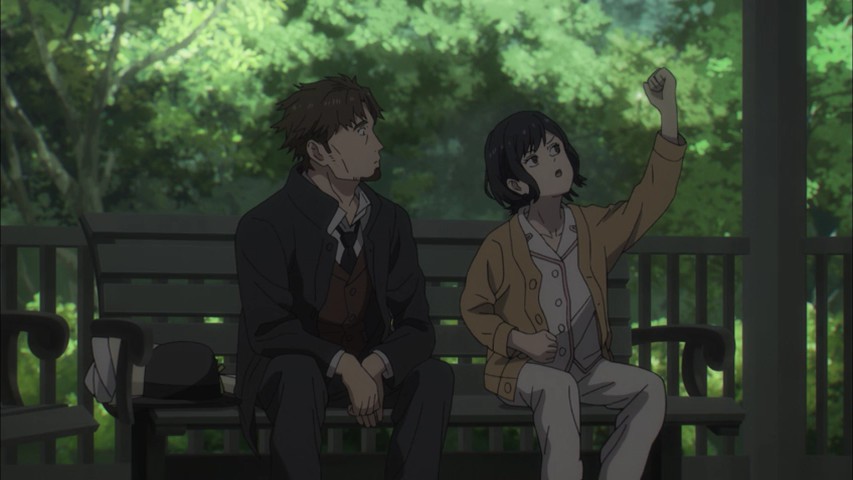
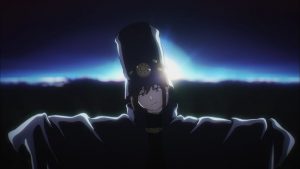
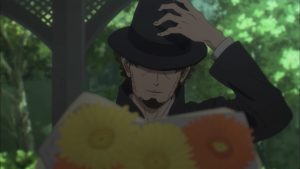
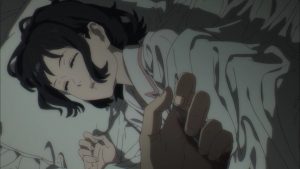
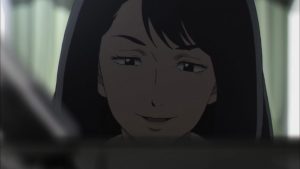


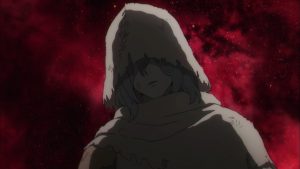


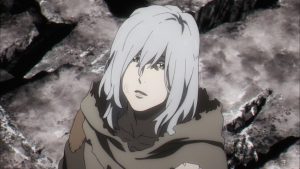

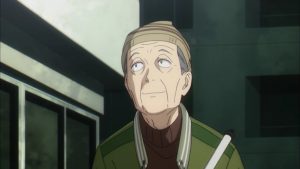

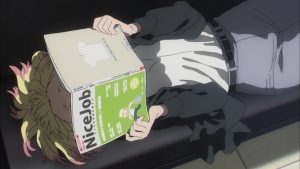
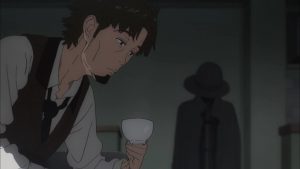
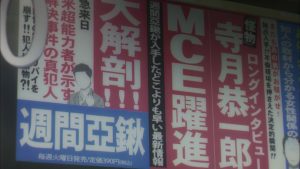
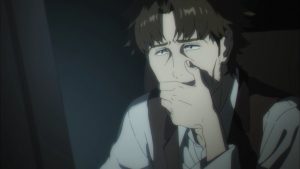



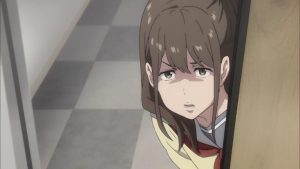

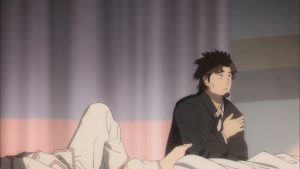
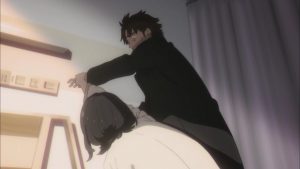
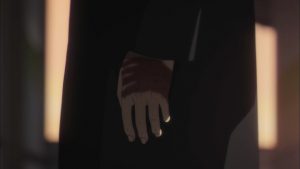

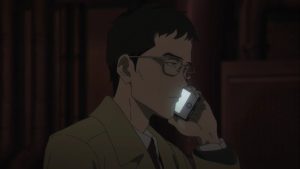
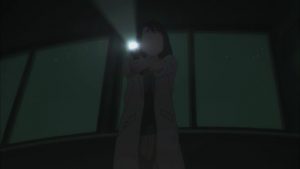
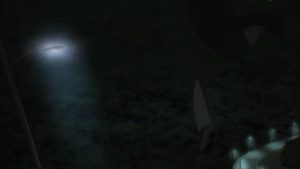
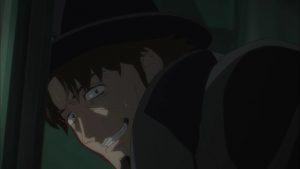
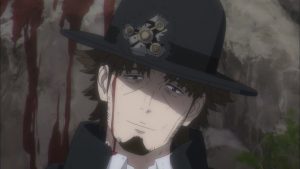
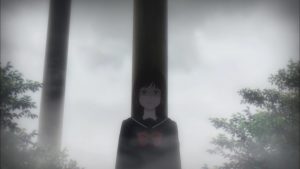
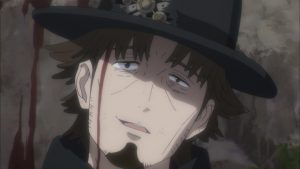


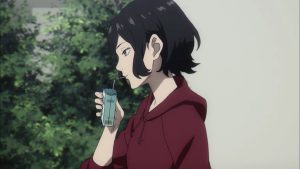





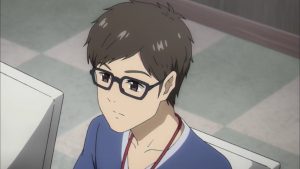
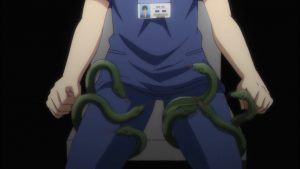

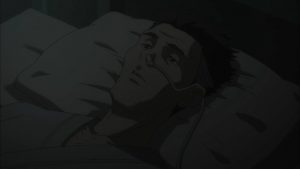
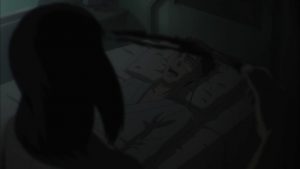
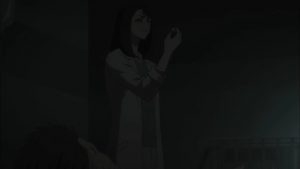

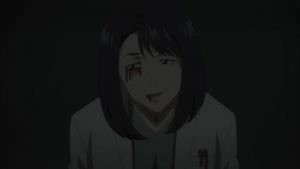
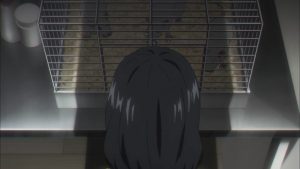

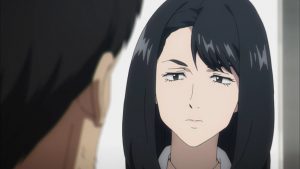


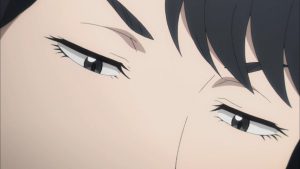
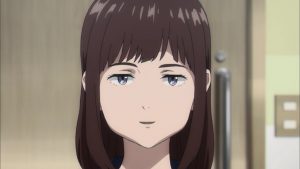
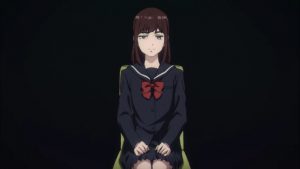
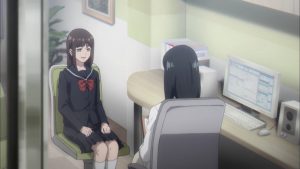



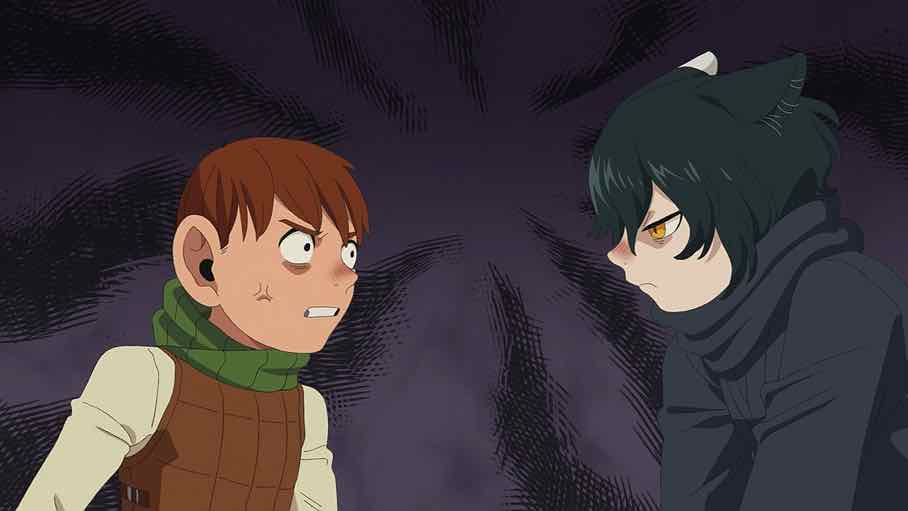
Jindujun93
February 24, 2019 at 11:19 pm> Kadono-sensei is apparently a Pink Floyd fan
Kadono is definitely a big fan of western music in general, because the Boogiepop novels are full of references. Ranging from chapter titles (like The Piper at the Gates of Dawn, which is the chapter that the intro of episode 10 with Boogiepop and Echoes covered), to character names (you already mentioned Echoes and Scarecrow, while Spooky Electric and Camille were references to two personalities that Prince claimed to have) to even directly naming groups and in one case even quoting lyrics (Masami Saotome from the first novel was singing ‘No One Lives Forever” by Oingo Boingo during the first novel, groups like The Doors or LED Zeppelin were namedropped at various points in the novels), so yeah, this is definitely his thing. It’s always fun to find them, and hey – I definitely got some earworms due to that after I’ve been looking into a few of the songs he namedropped that I didn’t actually know just yet, haha. Those are the nice side effects to when an author loves stuff like that.
In general, these two episodes (and the two following ones, but I won’t comment on them yet for fairness’ sake) have been a blast for me, because this was one of the arcs I was really looking forward to. Many years ago, when I first discovered the old anime and then read what’s been translated of the novels, I never actually thought I’d see this arc animated – but here we are, with me finally seeing the likes of Scarecrow, Mo Murder, young Nagi etc animated. Even glances at young Naoko from the first arc, or young Suema (she’s the girl that Dr. Kisugi picked as her next target in the restaurant). Admittedly, Scarecrow’s design here is very different to how he looked in the novels and old anime? But after being sceptical at first, I actually think it works pretty well too. It’s just different, so it took some getting used to.
And it’s honestly a testament to Kadono, but even though Scarecrow actually didn’t have all that much screentime, even back then he managed to make me care for the guy. Genuinely one of my favorite side characters from the novels, at least those that are translated (another good one sadly won’t show up in the anime, since novel 4 is the only translated one this anime won’t cover).
Guardian Enzo
February 24, 2019 at 11:29 pmThanks, good background info there.
I can’t believe I didn’t pick up on the Paisley Park thing too – your reminder about the Prince connection finally connected the dots.
Jindujun93
February 25, 2019 at 3:31 amHe goes as far as explicitly mentioning a song in the afterword of every novel that he imagines to be the BGM for it. So yeah. That should really tell a lot about Kadono already, haha.